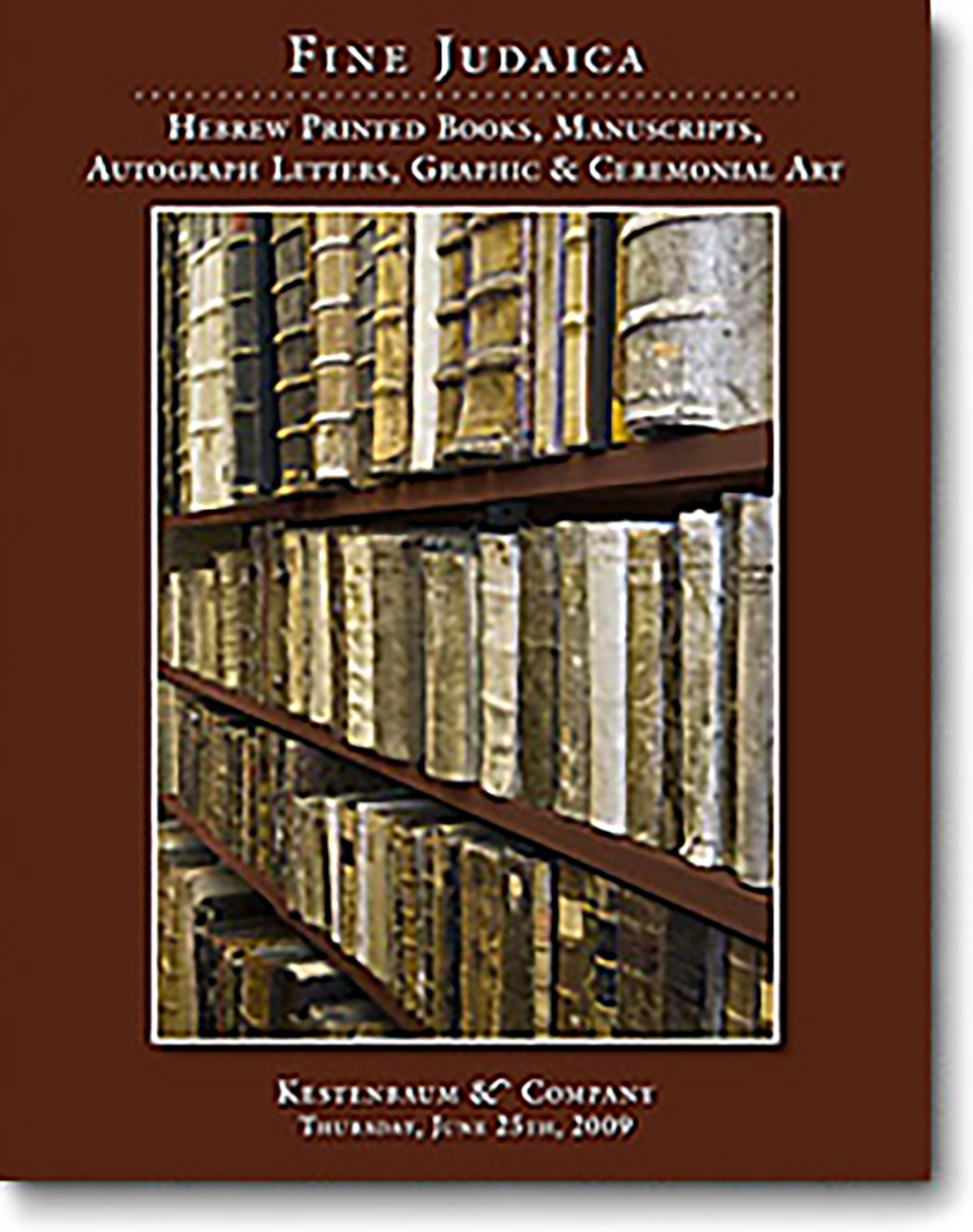(TRADITIONALLY ATTRIBUTED TO. Publicized by R. Moses b. Shem Tov de Leon). Sepher HaZohar [“The Book of Splendor”]

AUCTION 44 |
Thursday, June 25th,
2009 at 1:00
Fine Judaica: Hebrew Printed Books, Manuscripts, Autograph Letters, Graphic & Ceremonial Art
Lot 232
SHIMON B”R YOCHAI
(TRADITIONALLY ATTRIBUTED TO. Publicized by R. Moses b. Shem Tov de Leon). Sepher HaZohar [“The Book of Splendor”]
Mantua: Meir b. Ephraim of Padua and Jacob ben Naphtali Hakohen of Gazolo 1558-60
Est: $10,000 - $15,000
PRICE REALIZED $22,000
First Edition of the Bible of Jewish Mysticism.
The most sacred and influential of all Kabbalistic works, the Zohar is the preeminent classic of world mystical literature, a quest for Divine unity and a search for insight into the mysteries of the Torah. A textually inferior but more esthethic reprint by Vincenzo Conti of Cremona immediately followed this Mantua edition, nonetheless, Kabbalists such as R. Moses Zacuto (Rama”z), doyen of Italian kabbalists, more highly esteemed the Mantua edition for its precision, and eventually, the pagination of the Mantua edition became the standard.
Vol. II of our Mantua Zohar contains numerous scholarly marginalia.
One particularly interesting marginalium to Shemoth f.15v. reads: "I heard from reliable sources that in India there is a tree whose fruit becomes a bird. And they say that on the coast of England, small birds come out of the tree; before they mature they are suspended, and upon maturity fall into the waters and move about. Aristotle wrote this in his book…" The gloss comes to clarify the passage in Zohar, "When Rabbi Abba saw one tree whose fruit became a bird…"
In Mishpatim, f.118v. the marginalium offers an original explanation, based on Zohar, why it is the custom - according to Sepher ha-Kaneh - not to wear phylacteries during Musaph of the New Moon ("…since tephillin are [the sephirah of] Tzadik, and Musaph is also [the sephirah of Tzadik]").
Our anonymous glossarist quotes (e.g. Terumah ff. 153r. and 168r., and Pekudei f.237v.) from "Sepher Toledoth Adam," attributed to R. Joseph from Shushan (or Hamadan). Our present knowledge of Sepher Toledoth Adam is at best fragmentary. See G. Scholem, Kabbalah (1974), pp. 60-61; E. Gottlieb, Kiryath Sepher, Vol. XLVIII (1972-3), pp. 173-178. (Not to be confused with the much later arrangement of Lurianic Kabbalah that R. Jacob Tzemach called by the name "Toldoth Adam," now popularly known as Mevo She'arim.)
There abounds material attributed to [Joseph] Gikatilia. In Vayakhel, f.208v. mention is made of the legendary kabbalist [Joseph] de la Reina. In Vayakhel, f.209v., we have "Sepher ha-Me'oroth, called Berith Menuchah." The latest source cited is from the sixteenth century: Cordovero's Pardess Rimonim (Sha'ar Mehuth), see the gloss to Terumah, f. 167v.
These marginalia warrant scholarly attention with an eye to ferreting out early lost works of Kabbalah embedded therein
